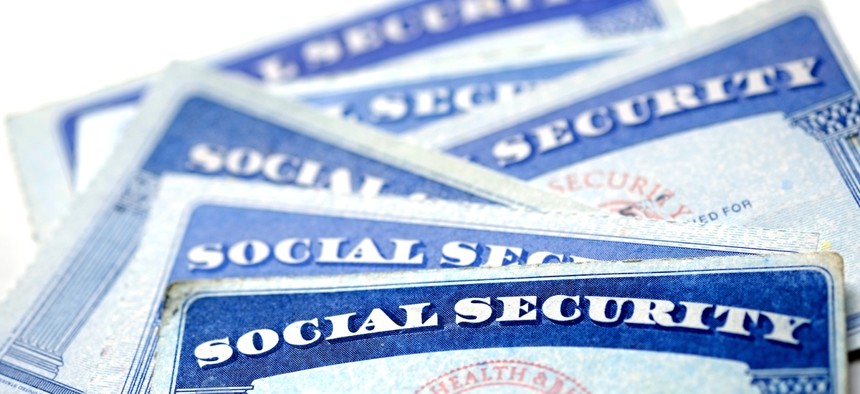Social Security Numbers Are Unsafe and Outdated. So Why Do Americans Use Them?

Lane V. Erickson/Shutterstock.com
The form of identification has become dangerously risky to use in the digital age.
The world has changed faster than our infrastructure or policymakers can keep up with. Case in point: the American Social Security number. What was once a simple administrative number is now an antiquated form of national identification that has become dangerously risky to use in the digital age.
It wasn’t always this way. One of the most memorable moments of the 1994 film Reality Bites, the ultimate Generation X movie, was a documentary interview between the two female leads after their graduation in which they discuss the nine-digit number that has come to define generations of Americans:
Lelaina: Quick, Vicky, whats your social security?
Vicky: Uhm… 851-25-9357.
Troy: Very impressive.
Vicky: That’s the only thing I really learned in college…
Social security numbers are often assigned to individuals at birth and remain theirs until they die. For a long time, it was normal for Americans, myself included, to not know their number until college, our first passage into adulthood. Here, the number would become our identity. We would be required to routinely repeat our Social Security number out loud, several times a day, to identify ourselves, register for classes, or check out a library book. After college, we would continue to be tied to the number through job applications, bank account applications, in cable, gas and electric bills, and so much more.
But as I write my Social Security number on each check and form this tax season, I have a keen sense of how much the number no longer defines me the way it once did. That’s because the number that was once my identity is now a source of danger that I am compelled to keep secret. I don’t dare say it out loud anymore. If I must, I say the number in a self-conscious whisper. The only people I feel comfortable revealing it to are my accountant and woman in human resources.
What changed?
Social Security numbers (SSNs) date back to 1935. They were created as part of the Social Security Act, which required a single number to track income over each American’s lifetime, in order to calculate the benefits they would receive after retiring. As the post-war economy developed and Americans became more mobile, SSNs became ubiquitous to daily life.
Back then, no one imagined a world in which a Romanian hacker could use a SSN to impersonate someone halfway around the world and steal millions of dollars. In the digital age, having one number that defines us has made us extremely vulnerable to growing identity theft. The Social Security Administration warns (pdf) that someone could use your number to open credit cards, take loans in your name, and destroy your credit, and it urges anyone with a SSN to keep it private. The Federal Trade Commission claims identity theft complaints nearly doubled between 2010 and 2015. Last year alone there were 830 security breaches, of all kinds, involving SSNs—one estimate puts the number of exposed numbers at 158 million. Odds are if you have a SSN, it has been sold on the dark web, and the options for getting a new one aren’t easy. When your credit card is stolen you get a new one, not so for a SSN.
In a rapidly changing world, SSNs are just another example of technology outpacing infrastructure. Almost everything in America is designed to identify people with a single number. But this system exposes people to risk in a world of hackers and identity thieves. No matter how careful we are with our secret number, there are hacks and data breaches into institutions we need and trust that leave us exposed.
Most countries still rely on a single government-issued number. Perhaps one day we’ll use fingerprints or our voices to identify ourselves. But until then, like multiple passwords, we need multiple ID numbers.
So far there are no immediate plans to change the system—America is likely to stay dependent on the SSN for some time yet. Changing the system takes planning, creativity, leadership, and the imagination to foresee what’s at stake if things don’t change.
At some point, American universities stopped using Social Security numbers to identify their students and switched to randomly generated numbers (I called several registrars at universities, none could recall exactly when the change happened). Students today don’t experience the intimacy with their Social Security number they once did—instead, the lesson they’re now learning is to keep it under wraps.


